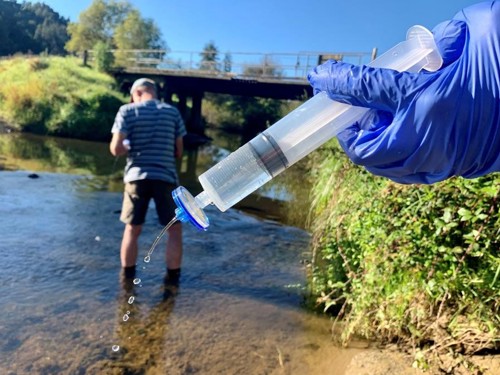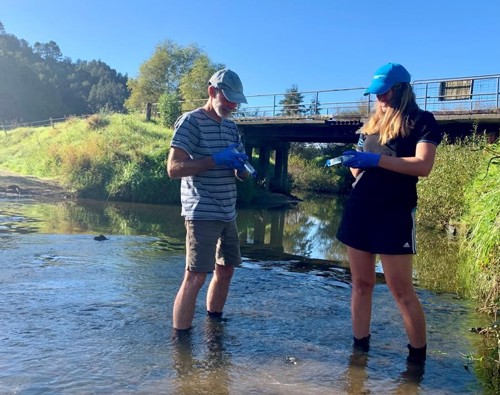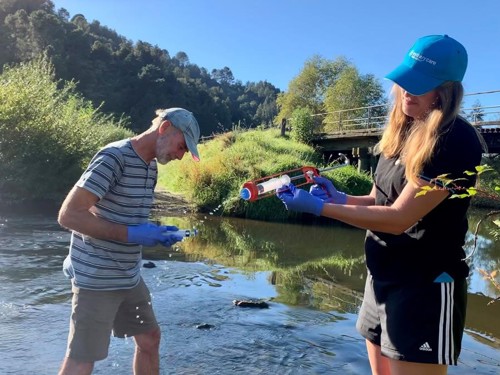

eDNA testing of rivers may reveal secretive fish
Secretive fish species may be uncovered through environmental DNA testing of rivers and streams in the Ōhiwa area.
Bay of Plenty Regional Council staff, on behalf of the seven Ohiwa Harbour Strategy partner organisations, are trialing two methods of collecting eDNA from streams feeding into Ōhiwa Harbour to discover which fish species call them home.
Graduate Environmental Scientist Erin Fox said it was very important to know which streams harboured which fish species so remediation work on a waterway could be planned for at an individual level.
“This work feeds into the survey of all culverts we are doing in the area to ensure native migratory fish can swim through man-made structures to access spawning and rearing habitat as well as food sources,” she said.
“If we find that a rare species is living in a particular stream, we can prioritise that stream for remediation work.”
The first method being trialled is a syringe method. Water is pushed through a filter at the end of a large syringe which collects genetic material from the water.
The second method simply sees filters placed in the stream for 24 hours which then passively collect genetic material as water passes through.
The genetic material is then sent to a New Zealand company for the eDNA results.
Mrs Fox said the eDNA testing is extremely sensitive, less time consuming for staff and less invasive and stressful on fish than other sampling methods.
“eDNA testing is very sensitive and so can sometimes produce false positives, such as picking up on dumped fish frames in the water or bait off someone’s fishing gear,” she said.
“However, other methods of sampling like trapping and stunning fish are far more time consuming and presumably more stressful on the fish.
“eDNA has another benefit in that it can detect the DNA of plant and animal species in and around the waterbody too which gives us a far clearer picture of the health of the waterbody as a whole.”
Once the survey of all culverts in the area is completed as well as the survey of fish species, work can begin to retrofit culverts where necessary with devices to allow fish to easily swim up and downstream.
This work will not involve any costs for landowners.
The Regional Council will also work with landowners to make sure any new structures installed instream do not hinder the movement of fish. New legislation now applies to the installation of instream structures, so landowners are encouraged to approach their land management officer at the Regional Council for advice around this.
ENDS
For further media information, please contact media@boprc.govt.nz

Water is passed through a filter at the end of a syringe to capture environmental DNA present in the river water.
Passive filters in place. These will be left in the stream for 24 hours to collect environmental DNA.

Above and below: Bay of Plenty Regional Council Land Management Officer Tim Senior and Bay of Plenty Regional Council Graduate Environmental Scientist Erin Fox take water samples to collect eDNA.

